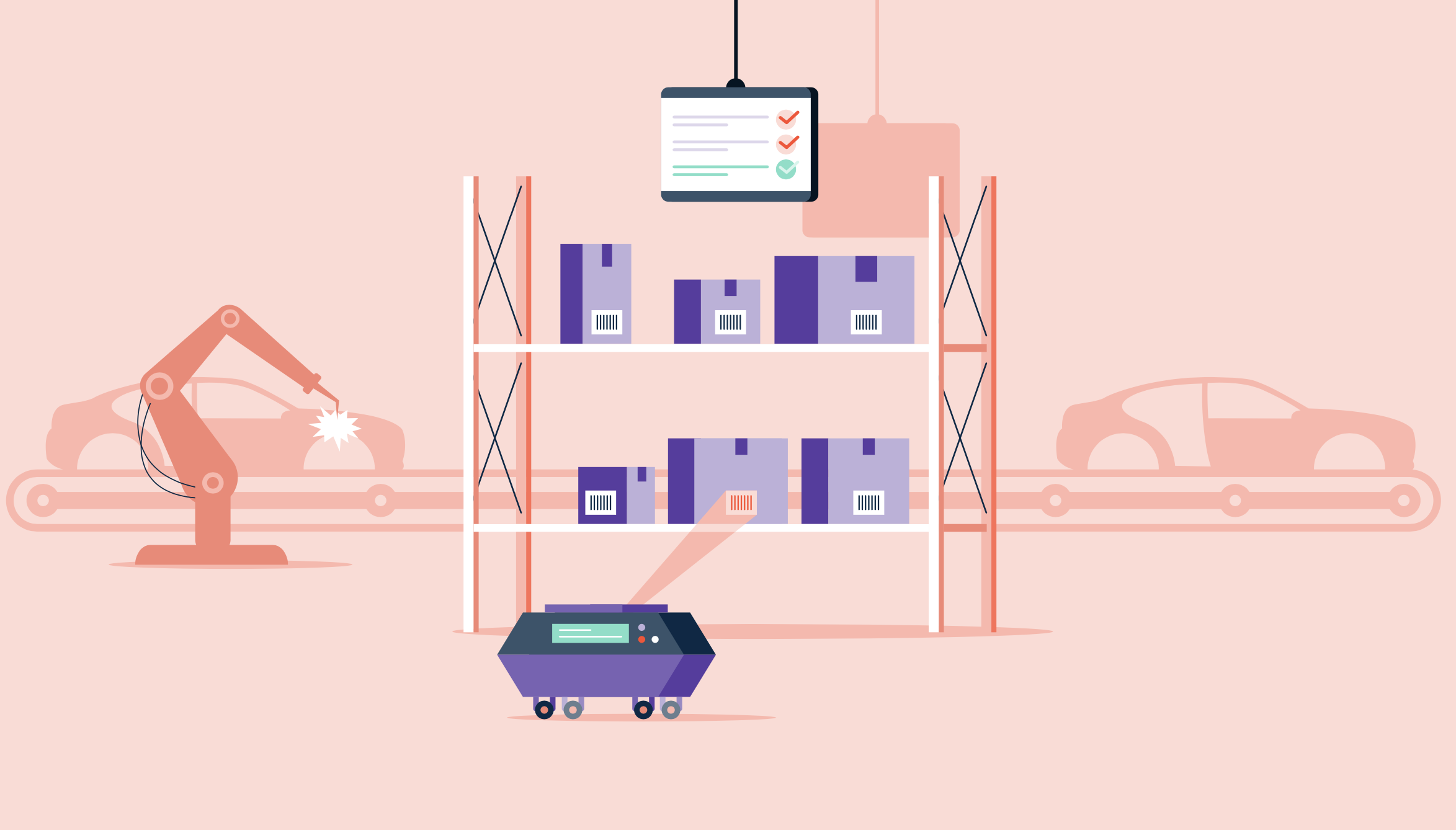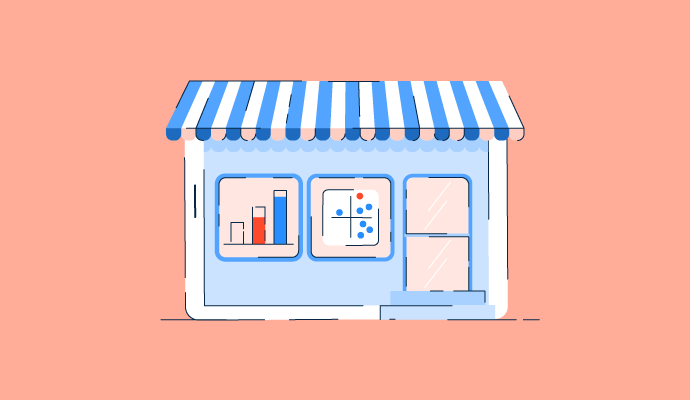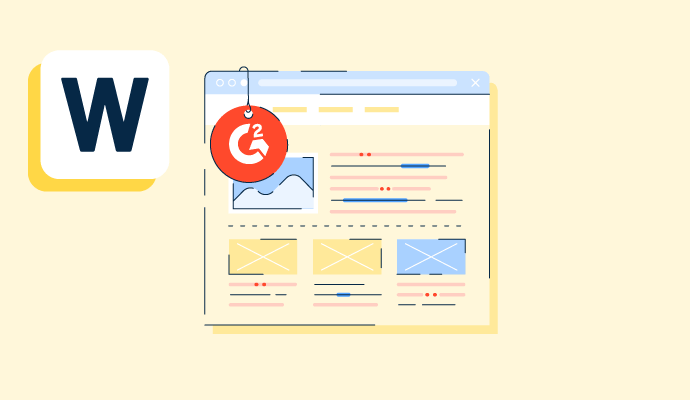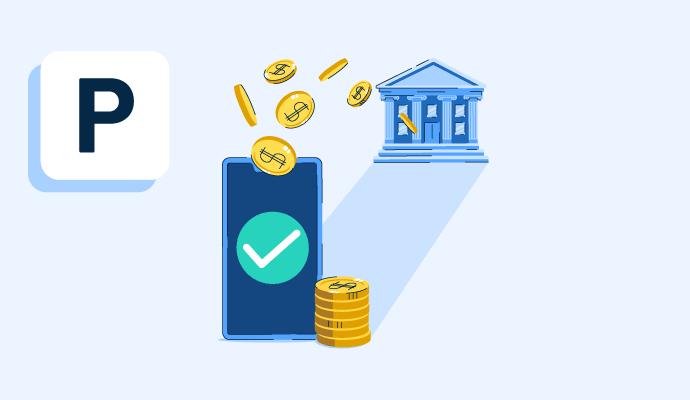E-Commerce Platforms Resources
Articles, Glossary Terms, Discussions, and Reports to expand your knowledge on E-Commerce Platforms
Resource pages are designed to give you a cross-section of information we have on specific categories. You'll find articles from our experts, feature definitions, discussions from users like you, and reports from industry data.
E-Commerce Platforms Articles
Top 30 FAQ Page Examples and How to Build Yours
It’s no secret that the best companies put their customers first.
by Deirdre O'Donoghue
The Benefits and Types of Manufacturing Inventory Management
Keeping track of all the goods in your inventory is easier said than done.
by Adithya Siva
2023 Trends in the E-commerce Industry
This post is part of G2's 2023 digital trends series. Read more about G2’s perspective on digital transformation trends in an introduction from Emily Malis Greathouse, director, market research, and additional coverage on trends identified by G2’s analysts.
by Subhransu Sahu
14 E-commerce Trends in 2023: The Future of Online Shopping
Entrepreneurs must stay curious about what's trending.
by Deirdre O'Donoghue
Highlights From the G2 Fall 2022 E-Commerce Reports
The e-commerce software market experienced significant changes in the past quarter caused by market corrections, changes in buyer behavior, and supply chain challenges. To understand how these changes impacted users, I analyzed the most recent G2 e-commerce reports data for fall 2022.
by Gabriel Gheorghiu
A Better Future for Digital Storefronts with E-Commerce Personalization
The COVID-19 pandemic brought about changes to many industries, including one of the most sought-after ones, the retail sector. From suppliers, manufacturers, distributors, wholesalers, and retailers to consumers, everyone was exposed to the vulnerabilities and consequences of the pandemic. Amidst this health and economic crisis, consumer shopping behavior changed entirely. Businesses realized the power of digital transformation and added a virtual storefront to their brick-and-mortar store as consumers adapted to shopping online.
by Subhransu Sahu
What Is Social Commerce, and Why We Created a New Category for It
The fact that social media is critical for e-commerce is obvious. There are billions of users on social media platforms, and many of them buy online. It is estimated that the number of social media users worldwide will reach 5.85 billion by 2027. In addition, sellers also use social media to share and promote their products—the value of social commerce sales worldwide is estimated at 2.9 trillion dollars by 2026.
by Gabriel Gheorghiu
Introducing the Returns Management Category on G2
It’s safe to say that almost everyone has returned a product that they bought, either in-store or online. The reason for the return isn’t relevant—maybe a shirt didn’t fit, a toy arrived damaged, or they just decided they didn’t want the merchandise anymore. Whatever the reason, the retailer or manufacturer needs to have the proper return infrastructure in place to process and track these returns, ensuring that inventory is replenished or updated, and the customer receives a replacement product or a refund or credit is issued.
by Nathan Calabrese
Hybrid Shopping Trends in 2022
This post is part of G2's 2022 digital trends series. Read more about G2’s perspective on digital transformation trends in an introduction from Tom Pringle, VP, market research, and additional coverage on trends identified by G2’s analysts.
by Gabriel Gheorghiu
Digital Wallet and Cashless Payment Trends in 2022
This post is part of G2's 2022 digital trends series. Read more about G2’s perspective on digital transformation trends in an introduction from Tom Pringle, VP, market research, and additional coverage on trends identified by G2’s analysts.
by Nathan Calabrese
2021 Trends in E-Commerce and Industry 4.0
This post is part of G2's 2021 digital trends series. Read more about G2’s perspective on digital transformation trends in an introduction from Michael Fauscette, G2's chief research officer and Tom Pringle, VP, market research, and additional coverage on trends identified by G2’s analysts.
by Gabriel Gheorghiu
Why You Need an E-Commerce Strategy and How to Create One
If you sell online, you surely use an e-commerce platform or shopping cart software to create and manage your online store, track inventory and payments, and maybe personalize your buyers’ shopping experience. But your competitors also use similar tools—so what is your competitive advantage?
by Gabriel Gheorghiu
COVID-19 Drives E-Commerce Growth for Brick and Mortar Retailers
The coronavirus pandemic has compelled consumers to stay home in quarantine, driving some brick and mortar stores to either move online or adopt a combination of both in-store (curbside pickup) and online sales methods for the first time.
by Nathan Calabrese
What Is E-Commerce? How to Launch Your Dream Business Today
Contrary to popular belief, not everything sold online is considered e-commerce.
by Deirdre O'Donoghue
56 Online Shopping Statistics to Unveil Latest Buying Trends
Online shopping, once a novelty, has now become a staple in our daily lives.
by Sagar Joshi
E-Commerce Platforms Glossary Terms
E-Commerce Platforms Discussions
0
Question on: Shopify
What is Shopify used for?What is Shopify used for?
Shopify is an Ecommerce CMS platform where we can setup the store and sell our products.
It's an integration to build your first website.
CMS to manage store content, build custom landing pages, and run marketing campaigns.
Shopify is used to create online store / Website (Ecommerce Store) without any coding knowledge so that an user can completely focus on selling and not to stuck with development of website with all necessary tools to boost the sale.
Shopify is used to build and run an online store. It lets people:
Create a website to sell products.
Accept payments.
Manage inventory.
Ship products.
Track sales and customers.
0
Question on: Shopify
How are entrepreneurs leveraging Shopify to build and grow their online retail businesses?How are entrepreneurs leveraging Shopify to build and grow their online retail businesses?
How they use it: Shopify allows entrepreneurs to quickly set up an online store, even without any technical or coding experience. Using Shopify's intuitive drag-and-drop interface, entrepreneurs can choose from various themes and templates to design their store.
Benefit: This saves time and resources, allowing entrepreneurs to focus on product sourcing, marketing, and customer engagement instead of spending time on complex web design.
Shopify is the backbone of any business selling products online. It has also been expanding native features, requiring less and less widgets/apps, as well as expanding its services, thus truly becoming a one-stop shop.
E-Commerce Platforms Reports
Mid-Market Grid® Report for E-Commerce Platforms
Summer 2025
G2 Report: Grid® Report
Grid® Report for E-Commerce Platforms
Summer 2025
G2 Report: Grid® Report
Enterprise Grid® Report for E-Commerce Platforms
Summer 2025
G2 Report: Grid® Report
Momentum Grid® Report for E-Commerce Platforms
Summer 2025
G2 Report: Momentum Grid® Report
Small-Business Grid® Report for E-Commerce Platforms
Summer 2025
G2 Report: Grid® Report
Enterprise Grid® Report for E-Commerce Platforms
Spring 2025
G2 Report: Grid® Report
Small-Business Grid® Report for E-Commerce Platforms
Spring 2025
G2 Report: Grid® Report
Mid-Market Grid® Report for E-Commerce Platforms
Spring 2025
G2 Report: Grid® Report
Grid® Report for E-Commerce Platforms
Spring 2025
G2 Report: Grid® Report
Momentum Grid® Report for E-Commerce Platforms
Spring 2025
G2 Report: Momentum Grid® Report

























